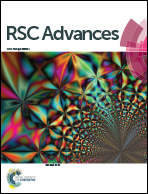Electrical conductivity equations derived with the rate process theory and free volume concept
Abstract
Inspired by the Marcus theory of electron transfer, electrical conductivity equations without reference to any specific materials are derived on the basis of Eyring’s rate process theory and the free volume concept. The basic assumptions are that electrons are assumed to have a spherical physical shape with an imaginary effective radius inferred from the latest experimental evidence; electrons traveling from one equilibrium position to another obey Eyring’s rate process theory; and the traveling distance is governed by the free volume available for electrons to transport. The derived equations fit very well with experimental data, and seem to trend consistently with the currently observed experimental phenomena, too. The obtained equations predict that superconductivity happens only when electrons form certain structures of a small coordinate number like electron pairs, with the coordinate number equal to 1 at low temperatures, which is in line with the popular Cooper pairs concept in the BCS theory for superconductivity. The current work may provide new insights into the rich conductive behaviors at low temperatures.


 Please wait while we load your content...
Please wait while we load your content...